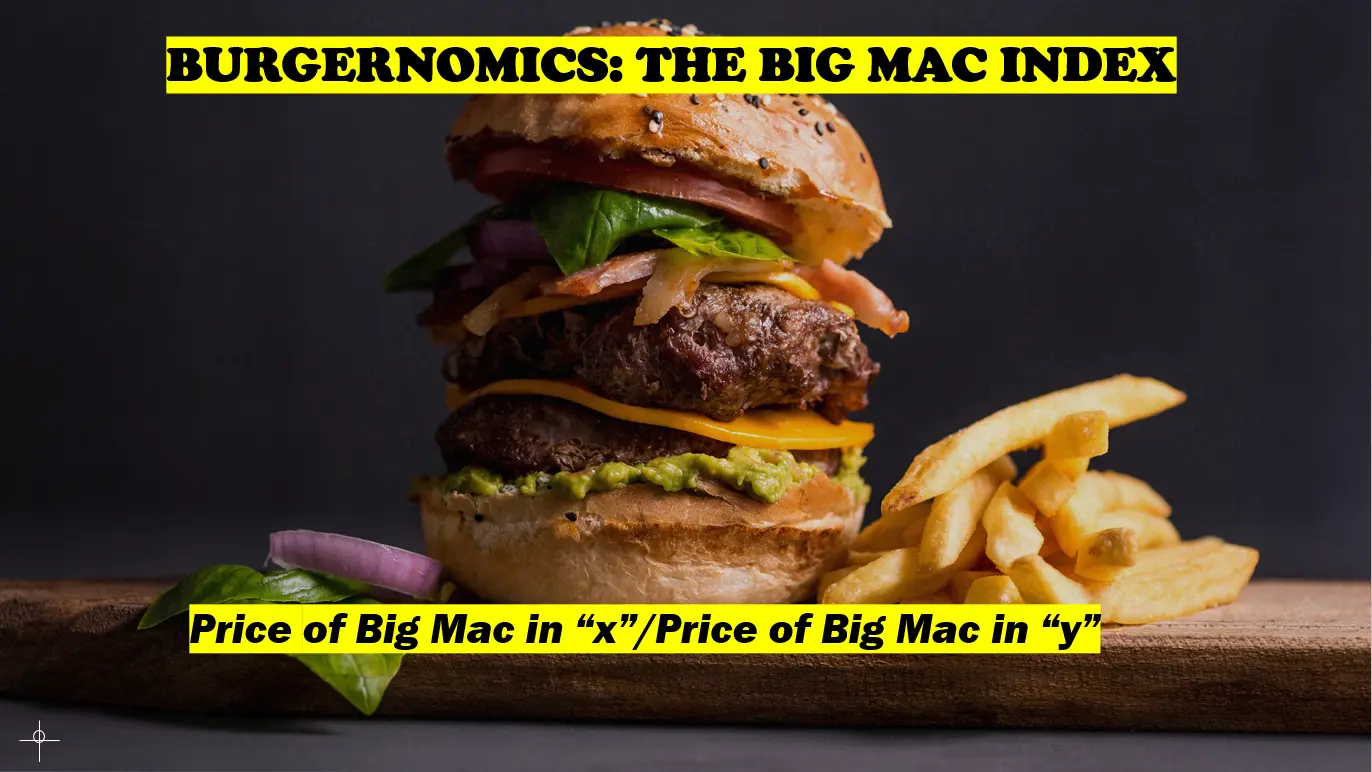The Big Mac Index was created in 1986 by The Economist Magazine. It calculates the price of the Big Mac Hamburger in fast-food chains (McDonald’s) in every country which is standardized.
The prices of Big Mac in different countries can be compared to analyse which countries have better buying power. It helps us understand the difference between (Purchasing Power Parity) PPP of different currencies in different currency.

For example, let’s say a Big Mac costs $4.00 in the U.S.A and 4.00 euros in Germany. Using the exchange rate of 1.20 dollars per euro, we can calculate the PPP exchange rate by dividing the price of the Big Mac hamburger in euros by the price of the Big Mac in dollars:
PPP exchange rate = 4.00 euros / 4.00 dollars = 1.00
In this case, the PPP exchange rate equals the actual exchange rate, which means that the euro is not overvalued or undervalued relative to the dollar. However, if the price of a Big Mac in Germany was 5.00 euros instead of 4.00 euros, the PPP exchange rate would be:
PPP exchange rate = 5.00 euros / 4.00 dollars = 1.25
In this scenario, the PPP exchange rate suggests that the euro is overvalued relative to the dollar because the price of a Big Mac in Germany is higher than what it would be if the exchange rate was in line with PPP.
By comparing the price of the big mac, we can evaluate the relative value of different currencies such as the Dollar, Euro, or Rupee in the respective countries.
The Big Mac Index is not perfect enough to be called a serious index, as it suffers from a lot of disadvantages, as it fails to recognize a lot of important factors such as wages, inflation, economy type, etc of the respective countries.
But it is a simple way of demonstrating the complex fundamentals of PPP in different countries.

